Hack the System, Think Like a Route Setter
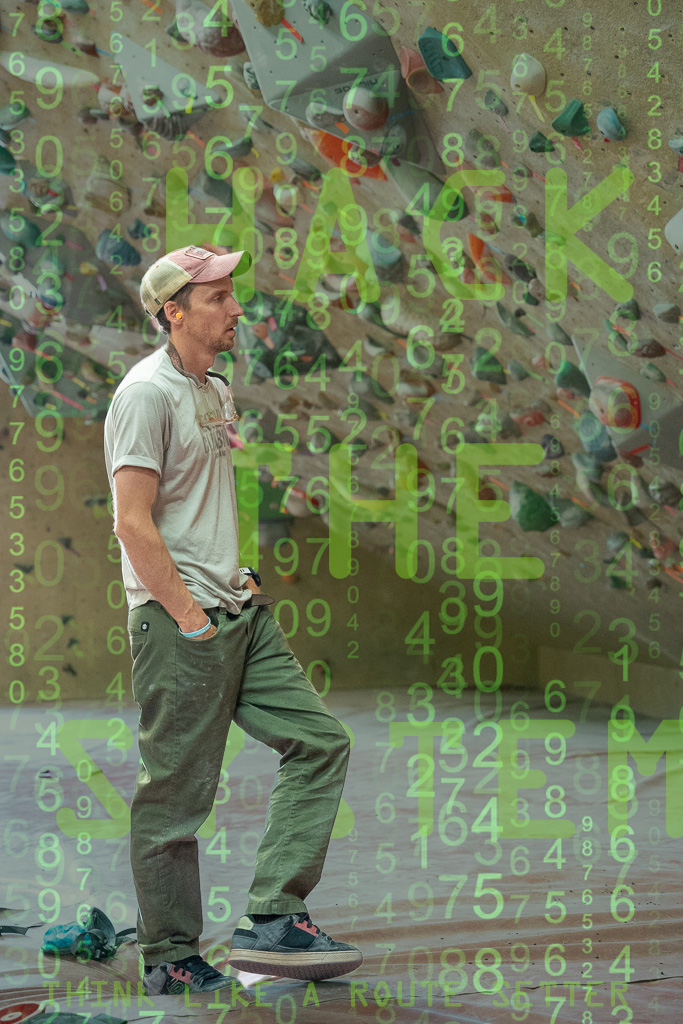
Climbing routes can be straightforward or cryptic—sometimes they leave us puzzled, wondering, “What in the world?” Have you ever stood before a climb feeling completely lost? The holds, the sequence, nothing seems to make sense. You’re left questioning where to start, how to move, and where to go next, thoroughly bamboozled. But what if I told you that route setters, contrary to popular belief, want you to succeed on their routes? While they aim to challenge and intrigue, their ultimate goal is for climbers to conquer the challenge and reach the top (and maybe learn something in the process). Understanding the mindset of a route setter can significantly enhance our ability to read routes effectively. Here are some tips to think like a route setter and conquer those cryptic climbs.
Thoroughly study the route. Differentiate between foot holds and handholds, and consider how to utilize the features of the climb. Routes become more engaging (and even more cryptic) when setters use less obvious holds and incorporate more ambiguous features like volumes, smears, aretes, and dihedrals. While it’s straightforward to spot a foot chip and plan to stand on it, incorporating such ambiguous features invites more creativity and can be more technically demanding.
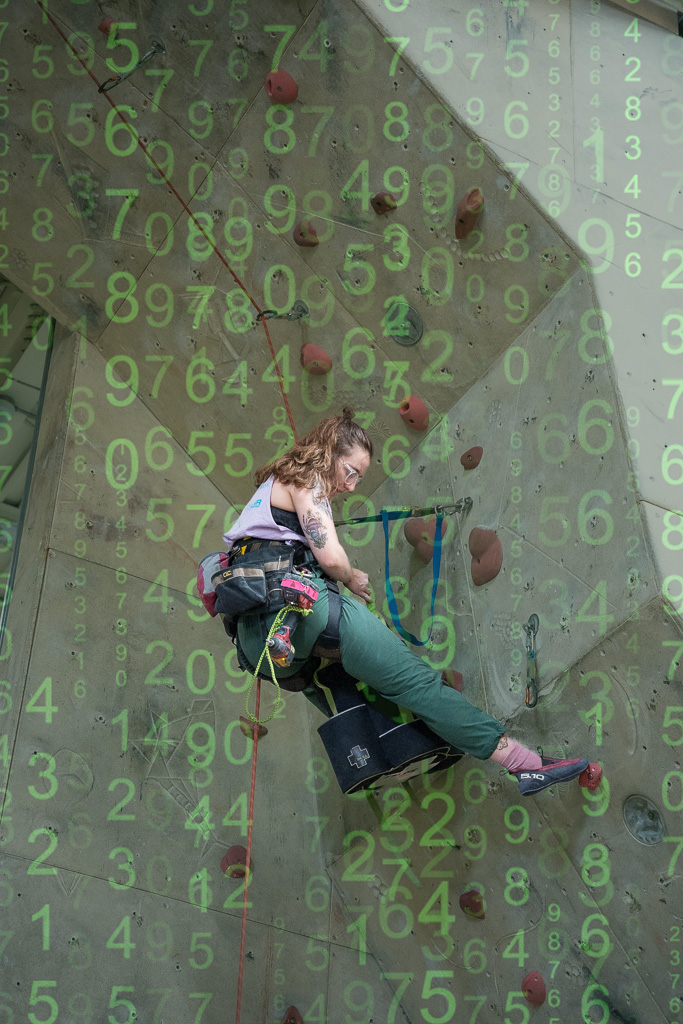
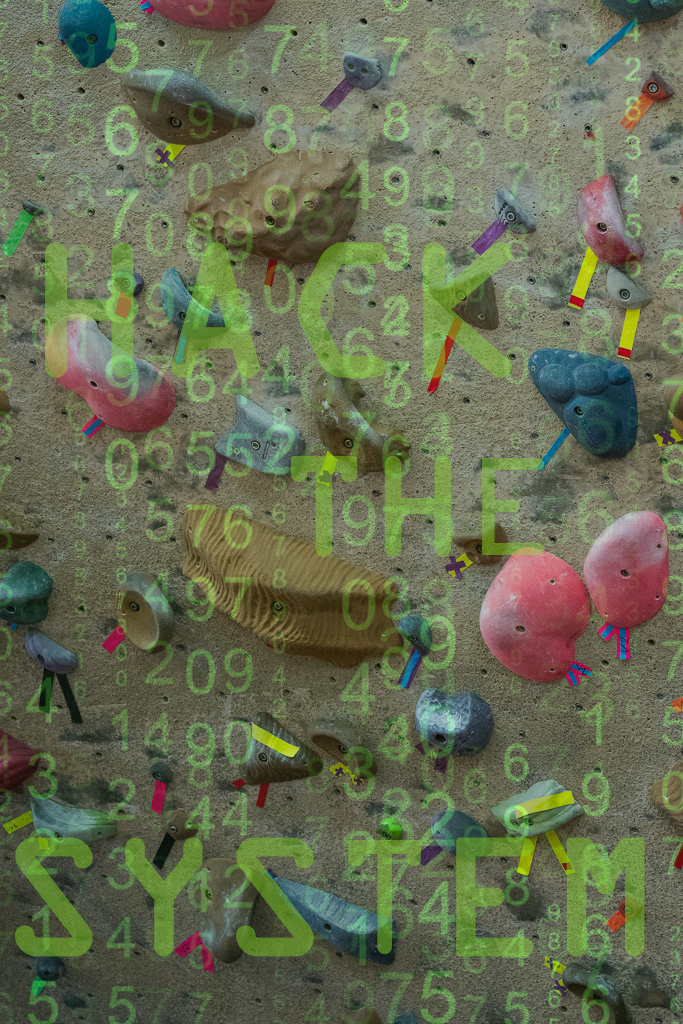
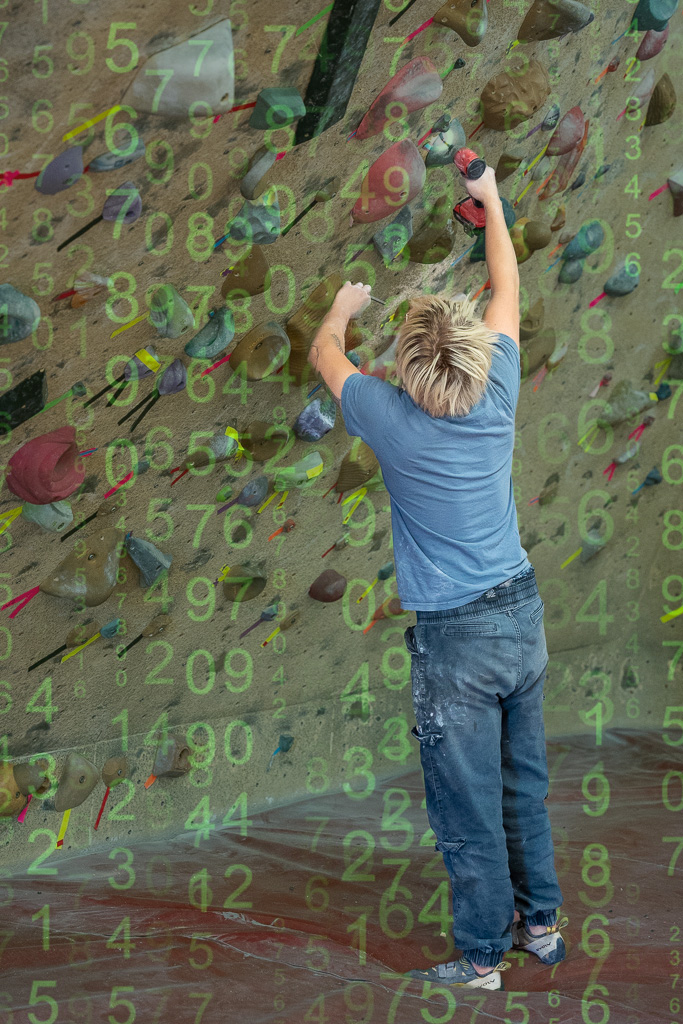
Look for clues left by the route setter. During the setting process, holds are washed, set, and foreran (climbed, tested, and edited). Chalk marks on holds usually indicates intended hand positions and grips, helping decipher the intended sequence. Following these chalked marks on routes often leads to the most efficient path up the climb. Pay attention to how holds are chalked—whether it highlights the most positive part of the hold or a specific grip technique.
Chalk acts as a heat map, this is can help and hinder us. After a climb goes up setters prep their climbs for forerunning. Hint, they probably don’t chalk things they don’t plan on grabbing (unless they enjoy mind games). They are chalking their intended sequence, so when they test the climb, they don’t fall off. Chalking makes the holds feel grippier after washing. Just like you and me, setters don’t want to dry fire off the route. As more and more climbers climb the route, you will start to see more clues, like chalky thumbs on the holds (thumb catch or pinch it!). Rubber also starts to accumulate, look for rubber in weird places. Under a hold? Toe hook! Side of a hold? Heel hook! As more and more climbers attempt the routes chalk might start to appear on non hand holds, team kids grabbing foot chips and desperate climbers grabbing and testing every single hold around them.
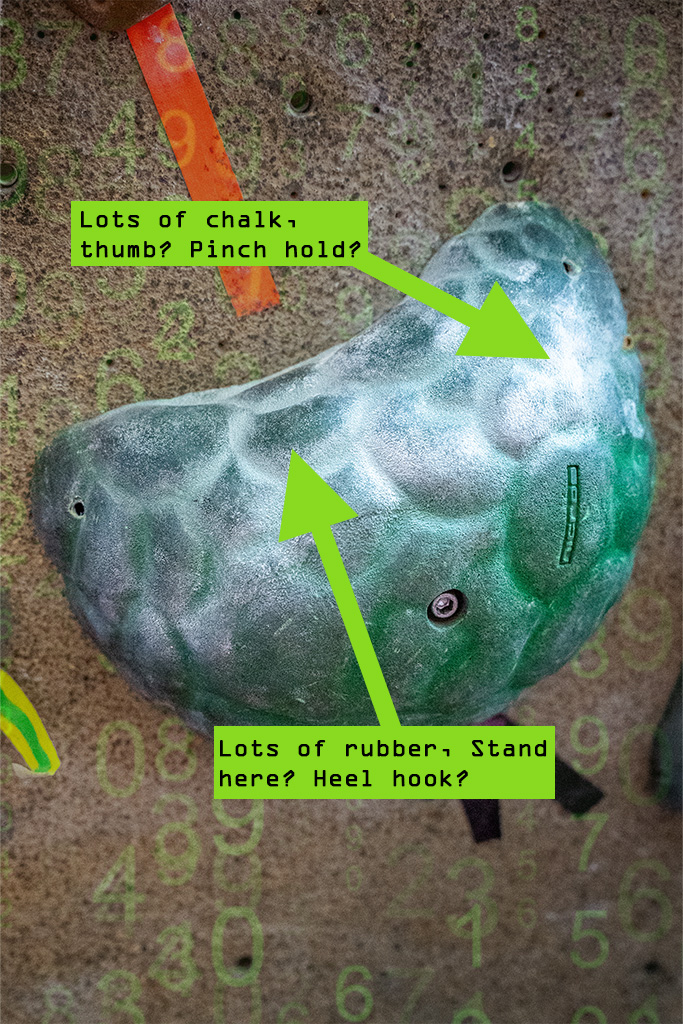
Consider the design and placement of holds. Route setters strategically place holds to challenge and engage climbers. Large tufas positioned low on the route may prompt techniques like bicycling or heel hooking. Rather than simply using brute strength, assess the technical advantages of each hold’s placement. Experiment with additional holds that may initially seem unnecessary; they could offer a better position or easier sequence than anticipated. Holds are designed to make setter’s jobs easier. Look at holds like setters look at holds. Oftentimes holds have specific features intended to be used in a certain way: matchable, dual texture, bumps & ripples, more than one positive edge, and so on. Setters will look at a hold and see movement possibility. Next time you look at a climb, try and think why the setter chose that hold.
By adopting the mindset of a route setter, climbers can enhance their ability to decipher and conquer even the most cryptic climbs. Understanding the intention behind each move and hold placement transforms climbing into a strategic puzzle, where success hinges on careful observation, planning, and execution.
Climbing is dangerous, it involves inherent and other risks and cannot be eliminated. The information presented here does not describe all of the risks associated with climbing and is not intended to replace or supersede expert instruction and training.
© 2024 Vertical Endeavors, Inc. All rights reserved. The contents of this article, photographs, and graphical representations are protected by U.S. and International copyright laws. Reproduction and distribution, in part or whole, without written permission from Vertical Endeavors are prohibited. The opinions and information contained in this article are for entertainment and informative purposes. They are those of the author and may not represent those of Vertical Endeavors, and do not necessarily reflect the ideas, ideologies, opinions, or points of view of the organization, affiliates, owners, stockholders, partners, suppliers, licensors, or staff. Under no circumstances shall Vertical Endeavors or any entity that is, has been, or will be affiliated be liable for any indirect, incidental, consequential, special, or exemplary damages arising out of or in connection with the information contained in this article.

